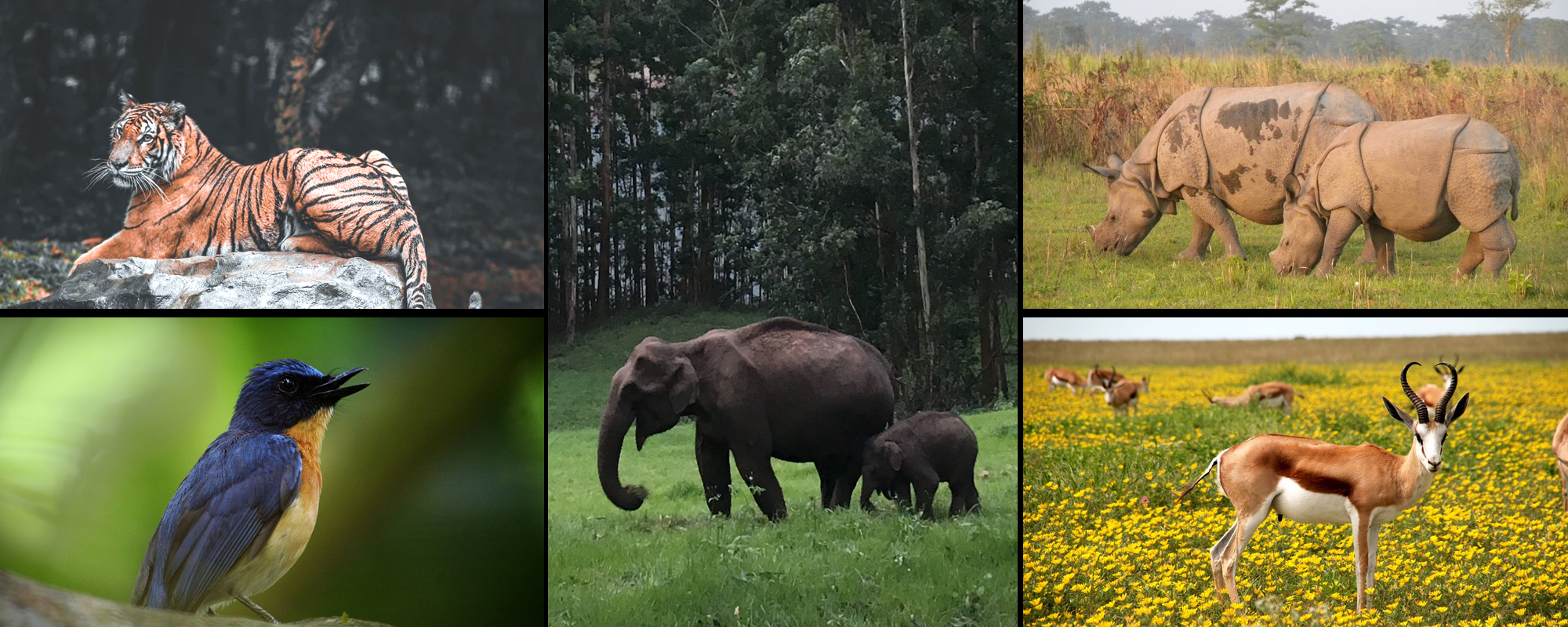
Situated in the beautiful topography of one of the Seven Sisters of India, Nokrek Ridge National Park adds to the stunning and breathtaking landscape of Meghalaya. Located in the East Garo Hills district of Meghalaya, Nokrek National Park is also a Biosphere Reserve and is renowned as Nokrek Biosphere Reserve as well. It was declared as a National Park in the year 1986 with an expansive area covering 47.48 square kilometers. Owning to a rich variety of flora and fauna and being a hotspot for biodiversity in Meghalaya, the park has been added to the list of UNESCO Biosphere Reserves in the year 2009.
The park is nestled at about 2km from the Tura peak at an altitude of about 4650 feet above sea level. The entire landscape of the park is an envelope of hills with a variety of rocky terrain made of gneisses, granulite, migmatites, amphibolite, and banded iron formation, intruded by basis and ultra-basic bodies. The area is covered with wide-ranging floral species and plants and a virgin awning of thick, tall, and lush green forests cover Nokrek National Park. The area comprising the national park is famous for wild varieties of citrus fruits that are extracted as gene-pool for the commercially produced citrus. The thick forest cover is also home to a different variety of insects and allows a sustainable food chain.
The national park is abode to a multitude of species of fauna among which the extremely rare Red Panda is also included along with several other reptiles, amphibians, and bird species. Nokrek National Park is considered an important bird area with numerous migratory and local birds hovering in the sky and is a delight for every bird watcher. Many rivers and streams that are of significance to the Garo Hill region rise from the Nokrek Range, among which the Simsang River is the most important. Memang Narang (mother of germoplasm), also known as Citrus Indica, was discovered in Nokrek National Park.
Nokrek National Park mainly comprises of a hilly terrain covered with thick semi-evergreen and moist deciduous forests. The park is also famous for cultivation of Memang Narang, a species of orange. Other important flora includes the orchids, wild lemon grass, champak, white meranti, etc.
Mammals: Asiatic Elephant, Red Panda, Tiger, Small Marbled Cat, Clouded Leopard, Slow Loris, Giant Flying Squirrel, Pig-Tailed Macaque, Stump-tailed Macaque, Hoolock Gibbon, Wild Buffalo, Capped Langur, Serow, Fishing-Cat, etc.
Birds: Siberian Stonechat, Siberian Rubythroat, Mountain Bamboo Partridge, Flavescent Bulbul, Green Pigeon, Peacocks, Pheasants, White Cheek Partridge, Grey-Peacock Pheasant, Bay Woodpecker, Great Hornbill, Common Hornbill, etc.
Reptiles: Viper, Krait, Mountain Lizard, Python, Gecko, etc.
The climate of Nokrek National Park is mainly tropical with high humidity, heavy rainfall, and high temperatures in summers.
The best time of the year to visit Nokrek National Park is between the months of October to May as the weather is wonderful and temperate. The monsoons must be avoided as they are very heavy and can create hurdles in your excursion.
Nearest Train Station: The closest railway station is Guwahati Railway Station, about 160km from Nokrek National Park which is well connected by road network to the park.
Nearest Airport: Nearest airport is the Guwahati airport, about 140km from Nokrek National Park. Guwahati airport is well connected by road network to Nokrek National Park.
Road Accessibility : The national park is well connected to road network from major cities and places. A number of government and privately operated vehicles that frequently go to the park.
Copyright 2012-2022 Indiamap Digital Pvt Ltd. All rights reserved. Privacy Policy | Terms of Use